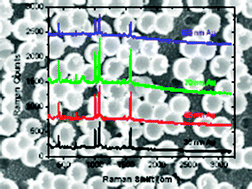Templated fabrication of metal half-shells for surface-enhanced Raman scattering
Abstract
Here we report a scalable colloidal templating approach for producing metal half-shells as efficient

- This article is part of the themed collection: Web Collection: Surface-Enhanced Raman Scattering (SERS)

 Please wait while we load your content...
Please wait while we load your content...